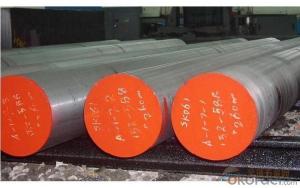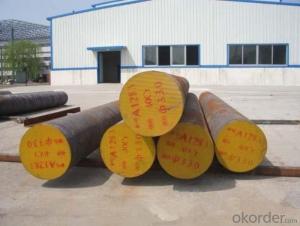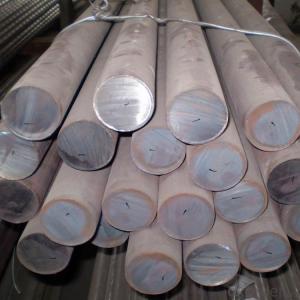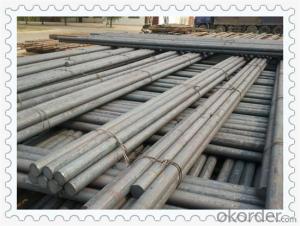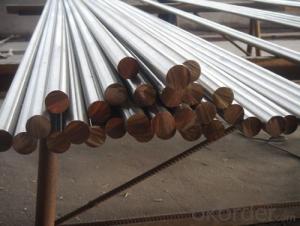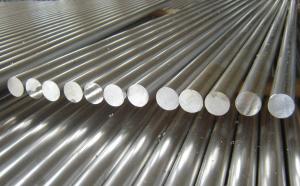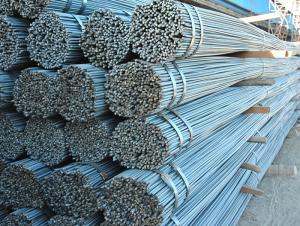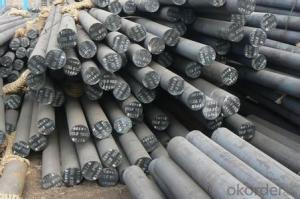HIGH QUALITY HOT ROLLED ROUND BAR Q235 ou Q195
- Loading Port:
- Tianjin
- Payment Terms:
- TT OR LC
- Min Order Qty:
- 25 m.t.
- Supply Capability:
- 20000000 m.t./month
OKorder Service Pledge
OKorder Financial Service
You Might Also Like
Round bar Details:
Brand Name: N-RIVER Place of Origin: Hebei, China Mainland Application: construction, building etcProduct Description:
Specifications of Wire Rod Q235:
Steel Grade: Q235, Standard: GB Diameter: 5.5mm, 6.5mm, 7mm,8mm,9mm,10mm,12mm,14mm
Diameter Tolerance:±0.3mm 6.5mm can be drawing into 2mm/8.0mm can be drawing into 3mm
Chemical Composition:
Please kindly find our chemistry of our material based on Q235 as below for your information
Trademark | Rank | Chemical composition (quality score) % | |||||
C | Si | Mn | S | P | |||
≤ | ≤ | ≤ | |||||
Q235 | A | 0.14-0.22 | 0.30 | 0.30-0.65 | 0.050 | 0.045 | |
Q235 | B | 0.12-0.20 | 0.30 | 0.30-0.70 | 0.045 | 0.045 | |
Trademark | Rank | Pulling Test | |||||
Bend PointΔs/Mpa | Tensile Strength | Elongation Ratioδ5% | |||||
Thickness (Diameter) /MM | Thickness (Diameter) /MM | ||||||
≤16 | 16-40 | ≤16 | 16-40 | ||||
≥ | ≥ | ||||||
Q235 | A | 235 | 225 | 375-500 | 26 | 25 | |
Q235 | B | 235 | 225 | 375-500 | 26 | 25 | |
Usage and Applications of Wire Rod Q235:
After hot-rolled the products shaped into coil and delivery as finished product, including round, square, rectangular, hexagonal and so on. Since most of the products are round, it is generally called wire rod. Carbon steel wire rod is widely used in construction and manufacturing. Carbon steel wire rod is mainly used for reinforcement of reinforced concrete and welded structure or reprocessed (roberts , nail, etc.) materials, especially used to produce wire drawing, welding electrode, nails, spring, electronic, precise machinery parts and so on.
Packaging & Delivery of Wire Rod Q235:
Packaging Detail: products are packed in coil and then shipped by container or bulk vessel
Each coil weight: 2-3MT
Delivery Detail: within 45 days after received deposit or LC.
Label: to be specified by customer, generally, each bundle has 1-2 labels
Trade terms: FOB, CFR, CIF
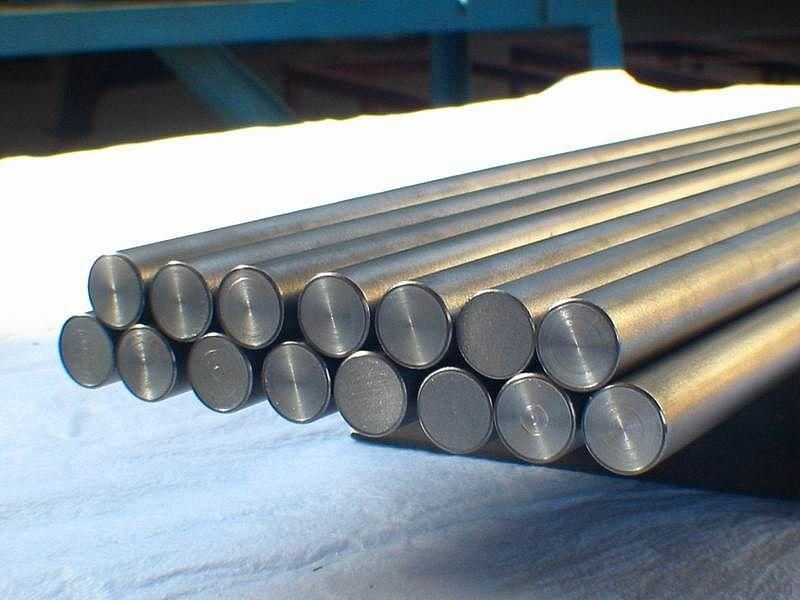
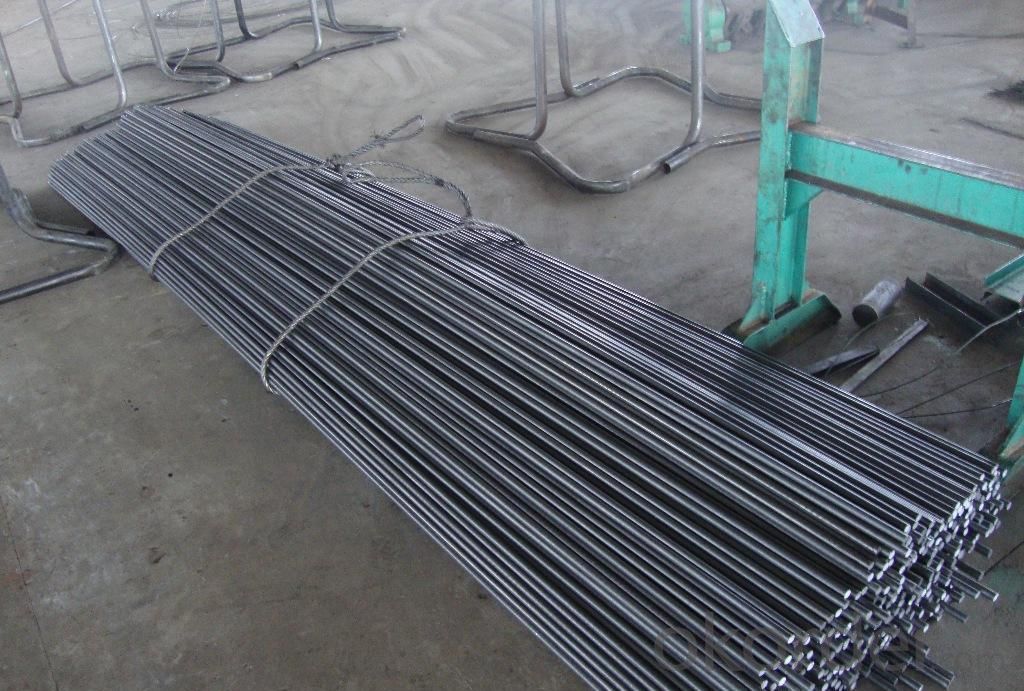

- Q: What is the difference between a bright and a rough turned steel round bar?
- A bright turned steel round bar refers to a steel bar that has undergone a finishing process, resulting in a smooth and polished surface. On the other hand, a rough turned steel round bar has a more textured surface due to minimal finishing, giving it a rougher appearance.
- Q: The difference between 304 stainless steel round bar and bright round bar
- The difference between the stainless steel round bar and the bright round steel of the same material is that the bright circle is cold rolled (or cold drawn), and the black circle is hot rolledThe processing method is different
- Q: Can steel round bars be used for making agricultural equipment or machinery?
- Agricultural equipment and machinery can indeed be made using steel round bars. Steel, a material known for its versatility and durability, is commonly employed in the manufacturing of various agricultural equipment and machinery. Steel round bars, specifically, are frequently utilized for the creation of essential components like shafts, axles, and rods, which are vital for the proper functioning of agricultural machinery. These round bars offer strength, stability, and resistance to wear and tear, making them well-suited for the demanding tasks within the agricultural industry. Moreover, steel is highly resistant to corrosion, a particularly crucial characteristic in agriculture where equipment is exposed to harsh environmental conditions. Overall, steel round bars are a dependable option for constructing agricultural equipment or machinery due to their mechanical properties and ability to endure the challenging conditions of agricultural operations.
- Q: Is round steel bar round steel?
- NoRound steel bars refer to hot rolled round steel bars for reinforced concrete. Round bars include high-quality carbon structural steel, round steel, ordinary carbon structural steel round bars, steel bars for prestressed concrete, etc.. Although the shape is round, but the material is different, so steel and round bar is two yards.
- Q: Are steel round bars prone to deformation?
- Steel round bars are generally not prone to deformation when they are properly manufactured and used within their intended limits. Steel is known for its high tensile strength and durability, making it resistant to bending or warping under normal circumstances. However, it is important to note that excessive force or improper handling can still cause deformation in steel round bars. Overloading, incorrect storage conditions, or inappropriate machining techniques can all contribute to bending or twisting of the bars. Therefore, it is crucial to follow recommended guidelines and industry standards to ensure the integrity and longevity of steel round bars.
- Q: What are the different types of steel round bar coatings used in the automotive industry?
- In the automotive industry, various coatings are commonly applied to steel round bars to enhance their durability, corrosion resistance, and overall performance. Here are some examples: 1. Galvanized Coating: Widely utilized in automotive applications, this coating involves the application of a zinc layer to the steel bar's surface. Galvanized coating provides excellent protection against corrosion, safeguarding the steel from rust and other forms of degradation. 2. Epoxy Coating: This coating is preferred when high chemical resistance is required in automotive applications. It forms a protective barrier against chemicals, moisture, and other corrosive substances. Additionally, epoxy coatings exhibit exceptional adhesion properties, ensuring long-lasting performance. 3. Powder Coating: Known for durability and aesthetic appeal, powder coating is a popular choice for steel round bars in the automotive industry. It involves the application of dry powder to the steel bar's surface, which is then heated, creating a tough and protective layer. Powder coatings offer a wide range of colors and finishes, allowing for customization and branding opportunities. 4. Ceramic Coating: Ideal for automotive applications involving high temperatures, ceramic coatings provide exceptional heat resistance. They form a protective barrier that prevents heat damage and extends the lifespan of steel round bars. 5. Phosphate Coating: Often used as a pre-treatment before applying other coatings, phosphate coatings enhance adhesion and provide additional corrosion resistance. They also improve the lubricity of the steel bar, reducing friction and wear. These examples demonstrate the variety of steel round bar coatings used in the automotive industry. Each coating offers unique benefits and is selected based on specific application requirements. Ultimately, these coatings play a vital role in improving the performance and longevity of steel round bars in automotive applications.
- Q: What are the different types of steel round bar surface finishes used in the aerospace industry?
- Different steel round bar surface finishes are utilized in the aerospace industry to meet specific requirements and enhance component performance. Some commonly employed finishes include: 1. Smooth Finish: This basic finish involves leaving the steel round bar untreated, resulting in a smooth surface. It is used when no specific treatment is needed or further processing is required. 2. Polished Finish: By polishing the surface, the steel round bar gains an aesthetically pleasing, reflective appearance. This finish is ideal for enhancing the look of aerospace components visible to passengers or in the cabin area. 3. Shot Peened Finish: Employing small metal particles or beads to bombard the steel round bar surface, shot peening creates compressive stresses that improve fatigue resistance and reduce stress corrosion cracking risk. 4. Anodized Finish: Through electrochemical means, anodizing forms a protective oxide layer on the steel round bar's surface. This finish enhances corrosion resistance and allows for color addition or improved paint adhesion on aerospace components. 5. Passivated Finish: Passivation involves treating the steel round bar surface with an acid solution to remove impurities and develop a protective oxide layer. This finish enhances corrosion resistance, particularly in environments with moisture or chemical exposure. 6. Zinc or Nickel Plated Finish: Plating the steel round bar with zinc or nickel provides enhanced corrosion resistance, especially in harsh conditions. These finishes are commonly used for aerospace components exposed to saltwater or acidic environments. 7. Black Oxide Finish: A chemical conversion process forms a black protective layer on the steel round bar through black oxide coating. This finish offers increased corrosion resistance and provides an appealing black appearance to the component. 8. Chrome Plated Finish: Depositing a thin layer of chromium onto the steel round bar surface through chrome plating yields excellent wear resistance. This finish is suitable for aerospace components subjected to high friction or abrasion. These diverse steel round bar surface finishes in the aerospace industry serve various purposes, such as corrosion resistance, wear resistance, improved aesthetics, or fatigue resistance. The choice of the appropriate finish depends on the specific requirements and performance expectations of the aerospace component at hand.
- Q: What are the common defects found in steel round bars?
- Steel round bars may possess several common defects, including surface cracks, internal voids, inclusions, segregation, and dimensional variations. Surface cracks can arise from manufacturing processes or improper handling and transportation, resulting in compromised structural integrity and reduced load-bearing capacity. Internal voids, also known as blowholes or cavities, emerge as empty spaces within the steel caused by trapped gases during solidification. These voids can detrimentally affect the mechanical properties of the bar, rendering it more susceptible to failure under stress. Inclusions, non-metallic particles or impurities, may be present in the steel. They may originate from raw materials used in production or contaminants introduced during manufacturing. Inclusions diminish the strength and ductility of the steel and can serve as starting points for cracks. Segregation refers to the uneven distribution of elements within the steel. It can occur during solidification, leading to areas of the bar with distinct chemical compositions. Consequently, variations in mechanical properties, such as hardness and toughness, arise, resulting in inconsistent performance. Defects can also manifest as dimensional variations, such as out-of-roundness or fluctuations in diameter. These variations impact the bar's fit and functionality, especially in applications requiring precise dimensions. To ensure the quality and reliability of steel round bars, particularly in applications demanding high strength and performance, it is crucial to identify and rectify these defects. Regular inspections, implementation of quality control measures, and adherence to industry standards and specifications aid in minimizing these defects and upholding the integrity of steel round bars.
- Q: What are the different types of steel round bar alloys for improved machinability and strength?
- Improved machinability and strength can be achieved with several variations of steel round bar alloys. These alloys are designed specifically for industries where efficient machining and high tensile strength are essential. Here are some of the popular alloys used: 1. 12L14: This alloy incorporates lead, functioning as a lubricant during machining. This results in improved chip formation and reduced tool wear. Its exceptional machinability and good strength make it ideal for applications involving intricate machining processes. 2. 4140: Known as "chromoly" steel, this alloy contains chromium and molybdenum, which enhance its strength and hardenability. It is extensively used in applications that demand high tensile strength, such as automotive parts, shafts, and gears. 3. 8620: This low-alloy nickel-chromium-molybdenum steel offers a combination of high strength and good toughness. It can be easily machined and is commonly employed in case-hardening applications like gears, shafts, and fasteners. 4. 1018: Referred to as "cold-rolled" or "cold-finished" steel, 1018 is a low-carbon alloy with good machinability and weldability. It finds common usage in applications requiring precise and smooth finishes, such as bolts, screws, and hydraulic fittings. 5. 52100: This high carbon, chromium-bearing steel is primarily used for manufacturing bearings and other high-wear applications. It offers excellent hardness, wear resistance, and machinability, making it suitable for components necessitating strength and durability. These examples illustrate the range of steel round bar alloys available to enhance machinability and strength. The choice of alloy depends on specific application requirements, including desired strength, machinability, and durability. Consulting with a materials engineer or supplier can assist in identifying the most suitable alloy for a particular use case.
- Q: How are steel round bars tested for quality and compliance?
- To ensure quality and compliance, steel round bars undergo a series of rigorous tests and inspections. The most commonly used test is the tensile test, which measures the bar's ability to withstand pulling forces. By stretching the bar until it breaks and analyzing the stress-strain curve, its mechanical properties, including yield strength, ultimate tensile strength, and elongation, can be determined. Another important test is the hardness test, which assesses the bar's surface resistance to indentation. This test helps determine the material's strength and its ability to resist wear and deformation. Chemical analysis is conducted to verify the composition of the steel round bars. This test determines the percentage of elements present, such as carbon, manganese, silicon, sulfur, and phosphorus. It ensures that the steel meets the required specifications and is suitable for its intended application. Dimensional inspection is crucial to ensure that the steel round bars meet the specified dimensions and tolerances. This involves using calibrated instruments to measure the length, diameter, and straightness of the bars. The surface quality is assessed through visual inspection and non-destructive testing methods, such as ultrasonic testing and magnetic particle inspection. These tests detect any surface defects, cracks, or discontinuities that may affect the bar's performance and integrity. Additionally, specialized tests may be conducted based on the intended application of the steel round bars. For example, bars used in the construction industry may undergo corrosion resistance or impact testing. In summary, the quality and compliance of steel round bars are assured through a comprehensive range of tests, inspections, and analyses. These tests enable manufacturers and customers to determine the suitability and reliability of the bars for specific applications, ensuring the safety and effectiveness of the final products.
Send your message to us
HIGH QUALITY HOT ROLLED ROUND BAR Q235 ou Q195
- Loading Port:
- Tianjin
- Payment Terms:
- TT OR LC
- Min Order Qty:
- 25 m.t.
- Supply Capability:
- 20000000 m.t./month
OKorder Service Pledge
OKorder Financial Service
Similar products
Hot products
Hot Searches
Related keywords









